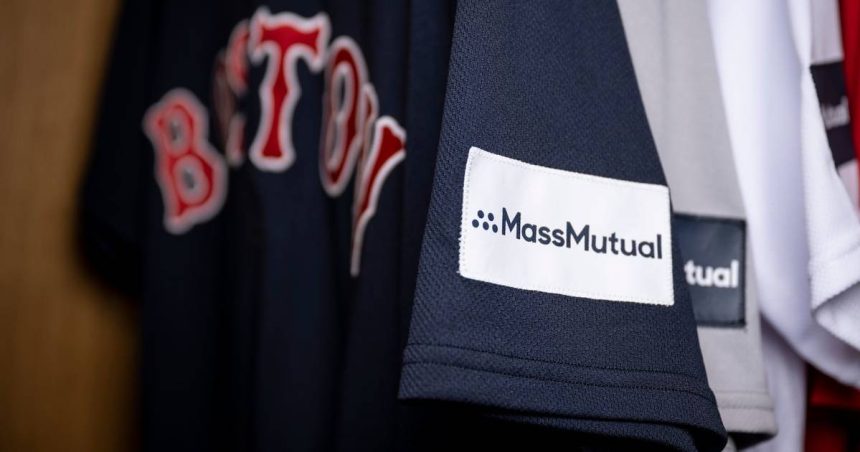The 2023 Major League Baseball season has been one of change. The league introduced a pitch clock with the hopes of speeding up the game, and also allowed brands to sponsor jerseys for the first time—a relatively new practice among the Big Four.
Jennifer Halloran, head of brand and marketing at Massachusetts-based insurance company MassMutual, is happy about just one of those things. That’s because MassMutual is the first jersey-patch sponsor of the Boston Red Sox.
“One of the things—I hate to say it out loud—that kind of hurt me this year was that they made the game faster,” she told Marketing Brew. “If the game had been longer, I would have had more people looking at us. I’m the only person that wanted the game to slow down.”
With MassMutual’s first season on the Red Sox’s sleeves coming to a close, Halloran reflected on the sponsorship and how she plans to leverage it in the years to come.
Building blocks
Sports make up a large portion of the brand’s ad spend, including sponsorships. In 2019, MassMutual announced a partnership with the National Hockey League, and it has also sponsored the Kentucky Derby.
MassMutual started working with a sports management and marketing agency to evaluate further opportunities to engage with sports throughout the year, which recommended partnering with MLB, according to Halloran.
“The brand is growing really well right now; it’s a hot market, and it also has a really diverse set of players and fans,” she said. “We really wanted to start to reach into new markets for us, and definitely more mass-market and diverse audiences.”
As MassMutual was speaking with the league, the company was approached by a connection at the Red Sox around the time insurance company John Hancock declined to renew its sponsorship deal with the team, Halloran said. From there, MassMutual and the Red Sox spent about eight or nine months setting up their contract, she said, before signing it in August of last year and making the official announcement in November ahead of the start of the season in March.
The deal reportedly cost MassMutual $170 million for 10 years, and comes with several additional assets beyond the 4-by-4 sleeve patch, according to Halloran.
Flip it and reverse it
The Red Sox partnership presented an opportunity for MassMutual to build national brand awareness, according to Halloran. Since the team travels for games, the sleeve patch lets the brand reach national markets. MassMutual also buys ads in those markets to reinforce the sponsorship, she said.
Get marketing news you’ll actually want to read
Marketing Brew informs marketing pros of the latest on brand strategy, social media, and ad tech via our weekday newsletter, virtual events, marketing conferences, and digital guides.
“People say, ‘Well, why would you do a sponsorship with the Red Sox? Everybody in Boston knows who MassMutual is,’” Halloran said. “What we’re really doing is tying ourselves with an iconic brand.”
It’s the “inverse of what we did with the NHL,” she said—sponsoring a regional team as opposed to a national league. Initial surveys of markets where the Red Sox have recently played suggests the strategy is working: For instance, after the Red Sox played four away games against the Astros in late August, MassMutual saw an “increase in recognition and awareness” among the Houston audience, according to Halloran.
Back home at Fenway Park, MassMutual has access to premium seats around the park to use for building relationships with potential partners, she said. The deal also lets MassMutual tap into the Red Sox’s first-party database, which could help bring in new potential customers, and includes a charitable component in the brand’s work with the Red Sox Foundation.
Measuring those assets “isn’t really rocket science,” Halloran said, although some goals are easier to track than others. Changes in brand awareness, for instance, can be calculated via surveys, but determining how many policy sales or new business leads were generated as a result of a client trip to a game can be more difficult. Halloran said MassMutual plans to do more measurement on that front in the second year of the sponsorship.
“I think it’s been amazing for us, from a learning perspective to a relationship perspective,” she said. “There’s a tremendous energy around it, whether it’s employees or business partners…I’m really excited to step out of the season, collect everything, and start planning for next year.”
Read the full article here










